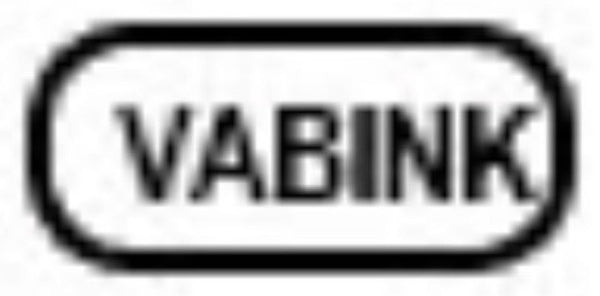Improving Indoor Air Quality by Smart Ventilation
Installing smart ventilation in your home is a financially viable investment. Here are some options for improving ventilation and the concept of smart ventilation:
1. Enhanced Ventilation Techniques: While traditional ventilation methods like natural and mechanical ventilation are effective, there are advanced techniques that can further enhance ventilation efficiency:
a. Demand-Controlled Ventilation (DCV): DCV systems monitor and adjust ventilation rates based on real-time occupancy and pollutant levels. These systems use sensors to detect factors such as occupancy, CO2 levels, or volatile organic compounds (VOCs). By adjusting ventilation rates according to actual needs, DCV ensures that energy is not wasted on unnecessary air exchanges when spaces are unoccupied or when IAQ is already satisfactory.
b. Zoned Ventilation: Zoned ventilation allows for customized ventilation control in different areas or rooms within a home. This approach recognizes that some spaces may have higher pollutant levels or specific ventilation requirements. By selectively directing airflow and adjusting ventilation rates in specific zones, zoned ventilation provides targeted air quality improvements where they are needed most.
2. Smart Ventilation: Smart ventilation refers to the integration of advanced sensors, controls, and automation technologies into ventilation systems to optimize performance and energy efficiency. These systems can dynamically adjust ventilation rates based on real-time conditions, making them responsive and adaptable. Smart ventilation solutions may include features such as:
a. Air Quality Sensors: Smart ventilation systems incorporate sensors to measure pollutant levels, humidity, temperature, and CO2 concentrations. These sensors provide real-time data that enables the system to adjust ventilation rates accordingly, ensuring optimal indoor air quality.
b. Automation and Connectivity: Smart ventilation systems can be integrated into home automation networks, allowing centralized control and monitoring. They can be programmed to automatically adjust ventilation rates based on preset schedules, occupancy patterns, or specific user preferences. Integration with smart home platforms enables remote monitoring and control, offering convenience and flexibility.
c. Data Analytics: Smart ventilation systems can collect and analyze data on indoor air quality, ventilation performance, and energy consumption. By leveraging this data, homeowners can gain insights into their ventilation patterns, make informed decisions about optimizing ventilation settings, and identify areas for improvement.
3. Energy Efficiency Considerations: Improved ventilation systems, including smart ventilation solutions, are designed with a focus on energy efficiency. By utilizing sensors, controls, and automated features, these systems can optimize ventilation rates to minimize energy waste. Additionally, energy recovery ventilation (ERV) and heat recovery ventilation (HRV) systems can recover the energy from outgoing air and use it to pre-condition incoming fresh air, reducing the overall energy demand for heating or cooling.
4. Integration with Other Home Systems: Smart ventilation systems can be integrated with other home systems, such as HVAC (Heating, Ventilation, and Air Conditioning) and air purification systems. This integration allows for coordinated operation and enhanced overall indoor environmental control.
By implementing improved ventilation techniques and adopting smart ventilation solutions, homeowners can benefit from enhanced indoor air quality, energy efficiency, and convenience. These advancements enable personalized and responsive ventilation strategies, leading to healthier, more comfortable, and environmentally friendly living spaces.
1. Enhanced Ventilation Techniques: While traditional ventilation methods like natural and mechanical ventilation are effective, there are advanced techniques that can further enhance ventilation efficiency:
a. Demand-Controlled Ventilation (DCV): DCV systems monitor and adjust ventilation rates based on real-time occupancy and pollutant levels. These systems use sensors to detect factors such as occupancy, CO2 levels, or volatile organic compounds (VOCs). By adjusting ventilation rates according to actual needs, DCV ensures that energy is not wasted on unnecessary air exchanges when spaces are unoccupied or when IAQ is already satisfactory.
b. Zoned Ventilation: Zoned ventilation allows for customized ventilation control in different areas or rooms within a home. This approach recognizes that some spaces may have higher pollutant levels or specific ventilation requirements. By selectively directing airflow and adjusting ventilation rates in specific zones, zoned ventilation provides targeted air quality improvements where they are needed most.
2. Smart Ventilation: Smart ventilation refers to the integration of advanced sensors, controls, and automation technologies into ventilation systems to optimize performance and energy efficiency. These systems can dynamically adjust ventilation rates based on real-time conditions, making them responsive and adaptable. Smart ventilation solutions may include features such as:
a. Air Quality Sensors: Smart ventilation systems incorporate sensors to measure pollutant levels, humidity, temperature, and CO2 concentrations. These sensors provide real-time data that enables the system to adjust ventilation rates accordingly, ensuring optimal indoor air quality.
b. Automation and Connectivity: Smart ventilation systems can be integrated into home automation networks, allowing centralized control and monitoring. They can be programmed to automatically adjust ventilation rates based on preset schedules, occupancy patterns, or specific user preferences. Integration with smart home platforms enables remote monitoring and control, offering convenience and flexibility.
c. Data Analytics: Smart ventilation systems can collect and analyze data on indoor air quality, ventilation performance, and energy consumption. By leveraging this data, homeowners can gain insights into their ventilation patterns, make informed decisions about optimizing ventilation settings, and identify areas for improvement.
3. Energy Efficiency Considerations: Improved ventilation systems, including smart ventilation solutions, are designed with a focus on energy efficiency. By utilizing sensors, controls, and automated features, these systems can optimize ventilation rates to minimize energy waste. Additionally, energy recovery ventilation (ERV) and heat recovery ventilation (HRV) systems can recover the energy from outgoing air and use it to pre-condition incoming fresh air, reducing the overall energy demand for heating or cooling.
4. Integration with Other Home Systems: Smart ventilation systems can be integrated with other home systems, such as HVAC (Heating, Ventilation, and Air Conditioning) and air purification systems. This integration allows for coordinated operation and enhanced overall indoor environmental control.
By implementing improved ventilation techniques and adopting smart ventilation solutions, homeowners can benefit from enhanced indoor air quality, energy efficiency, and convenience. These advancements enable personalized and responsive ventilation strategies, leading to healthier, more comfortable, and environmentally friendly living spaces.
